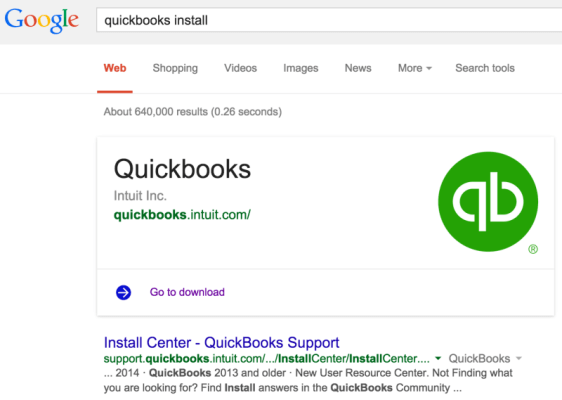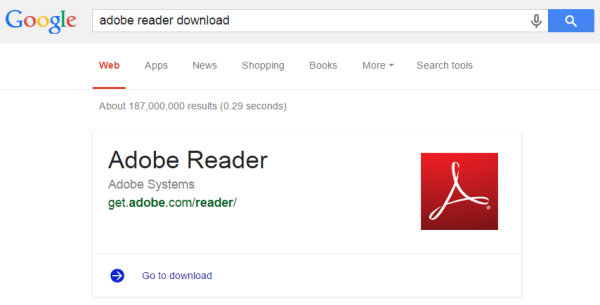Optimizing For The Google Quick Answers Box
Columnist Jim Yu of BrightEdge and Kirill Kronrod of Adobe share tips for getting your content featured in Google's Quick Answer box.
Google has made a lot of strides with the Quick Answer box over the past few years, and these developments have evoked mixed reactions from SEOs who see both the challenges and opportunities therein.
The challenge is, if a searcher can find the answer right in the search results, why would they click through to your site? The opportunity, however, is that if your site’s content is featured in the answer box with a link back to your site, you have prominent visibility.
In fact, the latest news in the quick answers dialogue is that Google is showing action-oriented links — basically calls-to-action — for certain queries in their answers box.
In this post, we’ll look at the fundamentals of optimizing for the answers box. I also asked Kirill Kronrod, a senior global SEO Manager at Adobe, to help by offering insights and optimization tips on how to improve quick answers visibility.
Optimizing For The Google Answers Box
For the purposes of this post, I am going to keep this brief but informative. There’s quite a bit to cover when it comes to semantic markup, structured data, and the Knowledge Graph.
The Google Knowledge Graph is what powers certain components on a search results page, and the quick answers box is just one of those components. Semantic markup, like that provided by Schema.org, is just one way to help communicate what’s on a page to search engines –beyond the basic SEO optimization practices we employ.
Schema.org has this to say on the matter:
On-page markup enables search engines to understand the information on web pages and provide richer search results in order to make it easier for users to find relevant information on the web. Markup can also enable new tools and applications that make use of the structure.
AJ Kohn introduced the acronym KGO (“Knowledge Graph Optimization”) back in March 2014. His analysis for what helps websites become more relevant to be featured in the Knowledge Graph-powered areas of the SERP included the following (not exhaustive):
- Employing structured data when appropriate
- Using nouns (i.e., entities) in your writing when it’s natural to do so
- Linking to relevant sites
- Managing your Freebase data (note: this is going away soon in favor of Wikidata, but the same idea applies)
- Being featured in Wikipedia
On that note, Wikipedia is a poster child for organizing data in a way Google likes to use. Not too long ago, when Structured Snippets hit the results, I shared examples and an analysis of why Wikipedia was displaying structured snippets often.
The bottom line: Google likes organized, easily accessible data. That’s why merging everything you know about SEO best practices with useful content and structured data can help you show up in Knowledge Graph-powered results.
When it comes to the Quick Answer box specifically, we see it surfacing often in the SERPs as a direct answer to a question. (To see some examples of this in action, check out “101 Google Answer Boxes: A Journey into the Knowledge Graph” on Moz.)
In a recent post for the BrightEdge blog, Kirill offered insight into the factors that allow web pages to be pulled into the answers box. Simply put, he says:
[blockquote]Pages that Google selects for quick answers on our site are high-authority pages with quality, well-structured content that is theme-relevant and optimized for a great user experience, and answer specific questions closely matching the query.[/blockquote]
Kirill’s tips for optimizing for the answer box include:
- Select a topic that’s interesting for your users
- Create quality content relevant to the theme (use “buyer persona” studies, focus groups, and engagement analytics to determine the content mix)
- Structure the page with user experience in mind
- Where relevant, clearly define a how-to list, including the phrase “how to” in content and bullet points clearly present answers
- Implement SEO practices like basic on-page optimization, theme-relevant cross-linking and technical SEO tactics
What About The Call-To-Action Link In Google Answers?
The latest news is that Google is showing a call-to-action in its answer box for certain queries. The report here at Search Engine Land showed several examples; here’s one for [QuickBooks install]:
While it’s still a bit early to tell what may be prompting this for all queries, Kirill offered observations, using Adobe examples for “download”-related queries.
“I tested our branded queries, and a few are earning the blue arrow + go-to link,” he said. “The Adobe Reader and Adobe Flash pages being linked to are very prominent pages, so no surprise there.”
Based on other industry examples and those from Search Engine Land, here are insights for how Google might be pulling these call-to-action links:
- Page authority plays a significant role in being featured as a call-to-action link; top landing pages usually perform best, which is closely related to authority
- The quantity and quality of links is a tipping point for deeper pages being featured, as well
- The presence of a “download” link on the page is not an influencer in some cases
As this is still a new feature, and optimizing for the Knowledge Graph in general is still fairly novel for many, we’ll be keeping an eye on developments and share any significant findings as they occur.
Opinions expressed in this article are those of the guest author and not necessarily Search Engine Land. Staff authors are listed here.
Related stories
New on Search Engine Land



